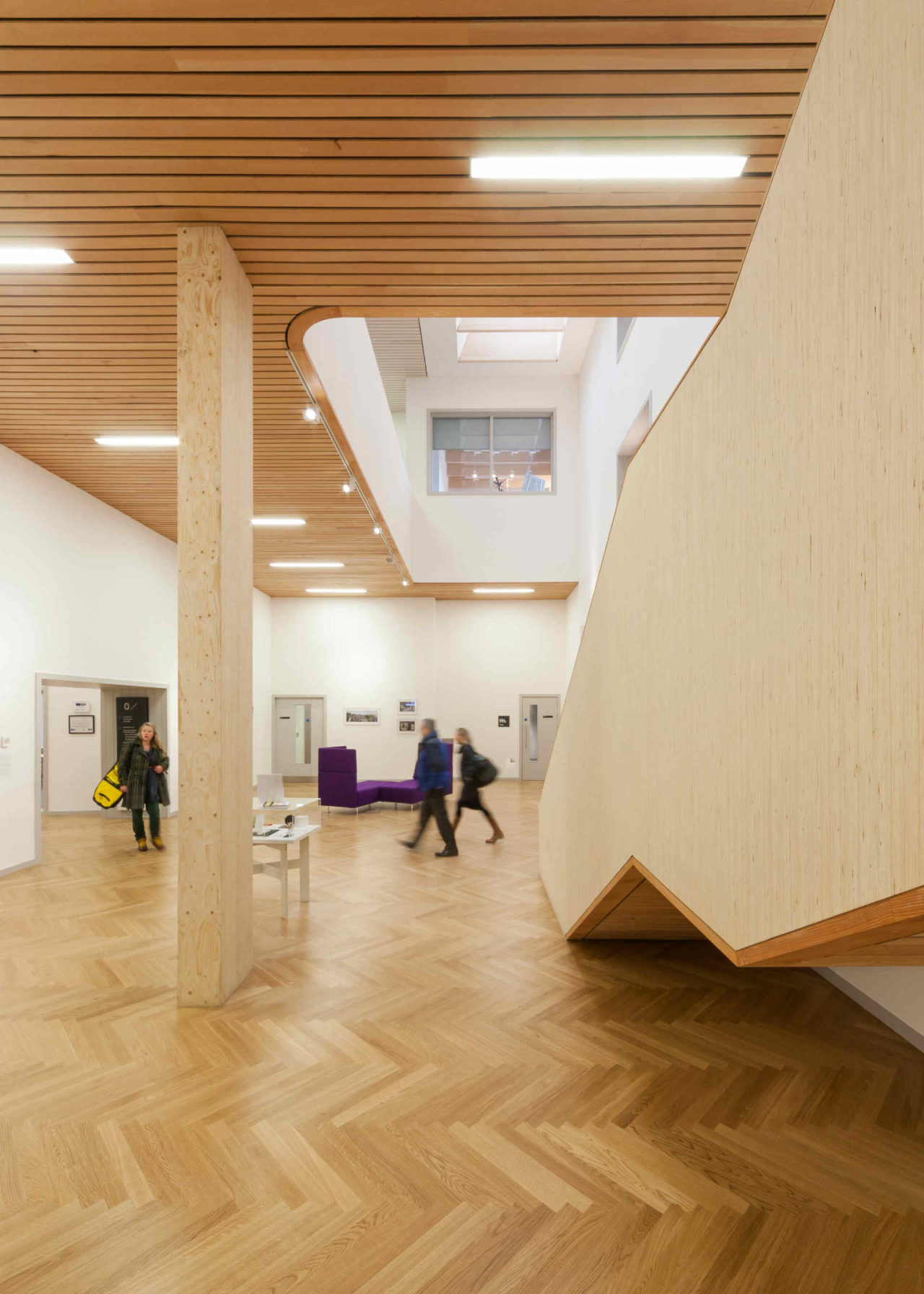Are you taking care of your health and wellbeing yet? This year has already been jam-packed with tips on getting healthier and embracing our mental and physical wellbeing in the workplace. It’s a positive direction and one that the built environment is clearly coming around to.
Sharing the health
Wood is known to have numerous positive effects on human health, proven in various studies. People working in environments with more wood are observed to show lowered heartbeat rates, a decreased perception of stress, decreased blood pressure and increased interaction.
In September 2018, we held a marketing summit looking at the health benefits of timber products and last week (Tuesday 12 March) we took the conversation a step further, looking at how these products should be marketed.
Christos Michael, from Capital Holz100, and Colin Wheatley from Medite Smartply, shared their experiences of bringing health and wellbeing to the forefront of their marketing and product development. Kevin Underwood, from the British Woodworking Federation (BWF), delved into the results of BWF’s feasibility study for the lifecycle certification of joinery products.

Capital Holz100 creates healthy timber homes and Medite Smartply creates sustainable timber construction panels. Both manufacturers had compelling cases for using wood for health and wellbeing purposes, but feel the UK isn’t emotionally invested like other countries in Europe, such as Austria. Christos talked about Holz100’s founder launching the business in a quest to improve his children’s health. Though the aim is to create a structure entirely made from wood, benefits are also felt from using solid wood joinery such as doors and windows inside the building. This is a serious consideration for any office refurbs where the fabric of the building can’t be altered but the interior can, to create a healthier workplace.
This message was backed up by Colin at Medite Smartply and how the focus now needs to be on educating the rest of the construction industry and beyond on how wood can improve building users’ health. There is a business case with much research showing the link between wood interiors and increased productivity.
Where next for wood in the workplace?
The message needs to sink in about the importance of looking at building materials as a link to increasing employee health and wellbeing. As Kevin at the BWF put it, without changing anything, the timber industry already has a healthy product. Colin at Medite pointed out that there is no choice but to use more carbon neutral products as the effects of global warming surround us. With an increased interest in indoor air quality, more needs to be done to improve this and wood plays an important part. Christos from Holz100 concluded that the retrofit market is likely to be the first that embraces the health and wellbeing qualities of timber.
Wood and wellness in the workplace
We’re not alone in raising awareness on this topic. In February, the conference on wood and wellness. One of the case studies presented was a project between facilities management company, Mitie, and DaeWha Kang Design, an architectural studio with a mission to improve building inhabitants’ wellbeing. The ‘Living Lab’ project monitored Mitie’s own employees in their office in the Shard. Participants spent four weeks in a typical office environment, then spent four weeks in the lab which embraces biophilic design principles. Encased in bamboo screens, the desks and even the lamps were made from bamboo and lighting was set up to replicate a typical circadian rhythm.
Rather than measure participants’ responses at the end of each period, surveys were sporadic to capture how each participant felt in that moment to gain a true picture of how they responded to their working environment. The results? 81% of the participants were more satisfied with the bamboo environment.
The business case is out there for workplace providers. If increasing productivity and decreasing absenteeism are on the tick list, turning to timber is the way to go.
Enjoyed this article, find more timber content here.
Authored by Christiane Lellig, Wood for Good campaign director.
Content Team
Work in Mind is a content platform designed to give a voice to thinkers, businesses, journalists and regulatory bodies in the field of healthy buildings.




